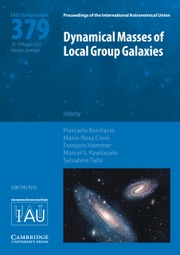No CrossRef data available.
Article contents
Pulsar science with data from the Large European Array for Pulsars
Published online by Cambridge University Press: 04 June 2018
Abstract
The Large European Array for Pulsars (LEAP) is a European Pulsar Timing Array project that combines the Lovell, Effelsberg, Nançay, Sardinia, and Westerbork radio telescopes into a single tied-array, and makes monthly observations of a set of millisecond pulsars (MSPs). The overview of our experiment is presented in Bassa et al. (2016). Baseband data are recorded at a central frequency of 1396 MHz and a bandwidth of 128 MHz at each telescope, and are correlated offline on a cluster at Jodrell Bank Observatory using a purpose-built correlator, detailed in Smits et al. (2017). LEAP offers a substantial increase in sensitivity over that of the individual telescopes, and can operate in timing and imaging modes (notably in observations of the galactic centre radio magnetar; Wucknitz 2015). To date, 4 years of observations have been reduced. Here, we report on the scientific projects which have made use of LEAP data.
Keywords
Information
- Type
- Contributed Papers
- Information
- Proceedings of the International Astronomical Union , Volume 13 , Symposium S337: Pulsar Astrophysics the Next Fifty Years , September 2017 , pp. 374 - 375
- Copyright
- Copyright © International Astronomical Union 2018

